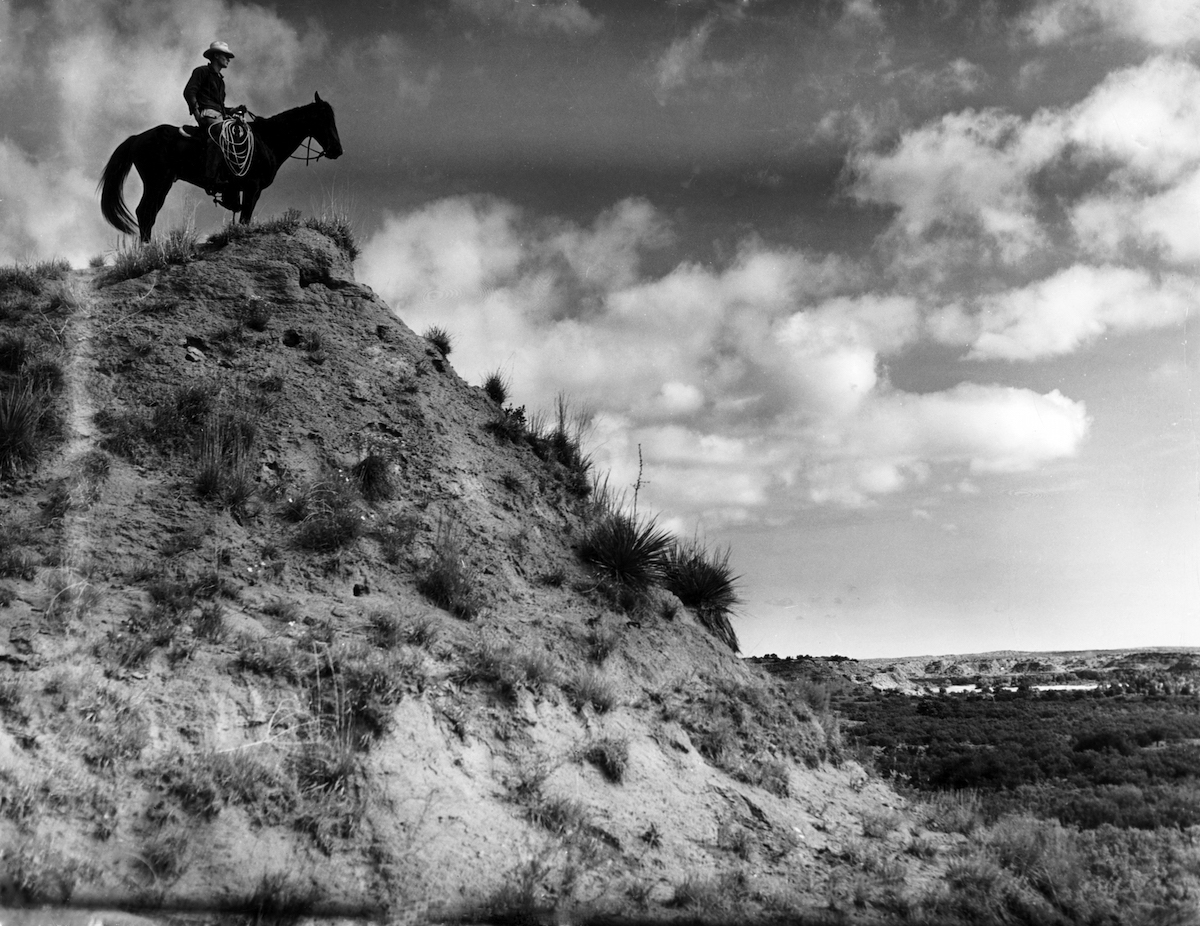
In 1947, TIME ran a short article about a Texas sheriff with a deadly reputation. Now, 70 years later, author James McCollom found inspiration in that story for a longer look at the sheriff’s legacy. Here, he explains how the repercussions of the article are still being felt:
I am hellbent to keep Beeville cleaned up so a lady can go up the street day or night.
I never take but one shot.
Both statements have lisped from the pale, thin lips of Bee County’s Sheriff Robert Vail Ennis. And both statements have been roughly true. Day or night a lady could sashay unmenaced up Beeville’s streets, past the cream stuccoed Kohler Hotel, the Blue Bonnet Café, and the two-story buff brick jail where Sheriff Ennis lives with his wife and daughter and keeps evildoers under lock & key.
The roughness in the second statement has been more apparent. In the past four years in Beeville (pop. 7,000), a South Texas oil and cattle town, Sheriff Ennis has killed seven people with his .44 Colt revolver and his .45 submachine gun—not all, however, with one shot…
By 1947, Sheriff Vail Ennis of Bee County, Texas, had shot and killed seven people in the previous four years. It was enough of a record that, when he killed two prisoners in the middle of an arrest, the news made the pages of TIME.
The TIME article became part of Bee County folklore. I left Texas after college but in my family visits to Beeville over the following decades I found the stories were still expanding. The direct effect of the article was to enhance the sheriff’s reputation, create his personal aura, and guarantee his re-election. He probably would have been sheriff ever after, had he not killed a man named Frederico Gutierrez — and had a lawyer named Johnny Barnhart been practicing someplace other than Beeville.
In 2001, I had just moved back to Texas from Miami when Johnny called me. He, too, was coming back to South Texas after many years away. Now late in life, he was fixated on the 1952 election and its consequences. I knew of Johnny but not that he was involved in Vail Ennis’ defeat. During the next several years, over lunches at the Blue Quail restaurant, I listened to his anecdotes and insights about the period, and weighed them against the accounts of other old-timers who were still around town, several holding to the old sentiment: “If only Vail were still sheriff…”
The sentiment reflects what was going on at a deeper level in Vail Ennis’ time. Texas was in transition. As of the 1950 census, the state’s rural population became the minority. The struggle between the perceived values of Old Texas and Urban Texas was under way. It’s essentially the same struggle defined by Frederick Jackson Turner in his “Frontier Thesis” published during the 1893 Chicago World’s Fair. Professor Turner concluded his thesis with a question as to how the country’s character and culture would be affected after the frontier was gone. When I was working on The Last Sheriff in Texas, it struck me that the longing for the lost frontier experience explained the great popularity of movie westerns in the 20th century, peaking during Vail Ennis’ time, then moving into the revisionist westerns of the ‘60s and ‘70s. You see it in the tone of the TIME article on the shootout — arch but a little wistful, under the heading ‘Texas,’ insisting the old west was still there.
I learned from Johnny Barnhart how the sheriff’s defeat was managed. He countered the perception of the sheriff as old west icon with a single photograph of a widow and children — Gutierrez’s family, speaking out against the sheriff — and followed with the first sustained media campaign the county had ever seen.
There was a touch of Greek drama in Johnny’s tales. He had been Beeville’s favorite son, head cheerleader at the University, one of the youngest members of the Texas Legislature. Johnny was the new Texan, the urban Texan. Horrified by the violence, he had waged a campaign against the famous sheriff, the symbol of the mythic Texas. He had split his community into irreconcilable factions. The beloved Beeville of his youth would never be the same. His ideological victory came with a terrible personal loss. He knew he had done the right thing, but he had suffered the loss of his childhood friendships in doing it, and this haunted him to the end of his life.
But I learned something else in 2016.
Midway through that year, as the bizarre realities of the U.S. presidential election came into focus, The Washington Post sent two journalists on a 35-day tour of the red states asking, What’s happening in America? What does it mean to be American?
In essence: Who are these people?
Professor Turner might explain that they are, essentially, The West.
Which is The Past.
Which is always present.
James P. McCollom, author of The Last Sheriff in Texas, grew up in Beeville, Texas. His career in international banking spanned 1966-2001, in offices in Chicago, Brussels, Madrid, New York, and Miami. He is also the author of The Continental Affair: The Rise and Fall of the Continental Illinois Bank.
More Must-Reads from TIME
- Where Trump 2.0 Will Differ From 1.0
- How Elon Musk Became a Kingmaker
- The Power—And Limits—of Peer Support
- The 100 Must-Read Books of 2024
- Column: If Optimism Feels Ridiculous Now, Try Hope
- The Future of Climate Action Is Trade Policy
- FX’s Say Nothing Is the Must-Watch Political Thriller of 2024
- Merle Bombardieri Is Helping People Make the Baby Decision
Contact us at letters@time.com